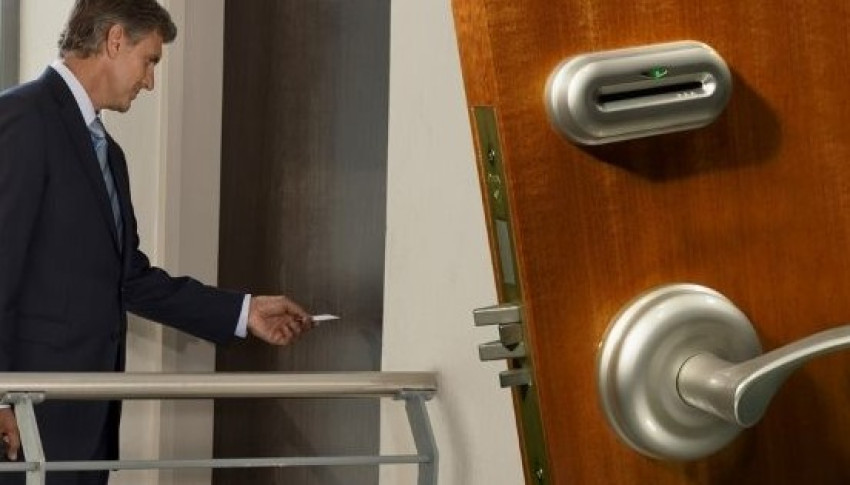
In an increasingly linked and security-conscious society, the ways we protect our assets, data, and personal safety are changing. Card access systems are at the vanguard of this revolution, providing sturdy and adaptable solutions for enterprises and individuals. These systems are more than just a way of controlling entry; they represent a paradigm leap in security technology, providing improved protection, operational efficiency, and a consistent user experience.
The Core Components of Card Access Systems
Systems of card access control systems are made up of several elements for them to be effective in securing a certain facility.
Access Cards: These are usually PVC cards often containing magnetic strips, RF Encode Chips or smart card technology. The cards are coded to the specific user, which allow them to gain access to the specific areas that are permitted to them.
Card Readers: These devices are configured to read information that is stored on access cards. Incorporated in this place, readers could be magnetic stripe readers, RFID readers or smart card readers based on the specific technology.
Control Panel: The control panel for the system can be considered as the main control since it receives information from the card readers then determines whether to allow or to deny access based on prior set permissions.
Electronic Locks: This type of locks is operated through the control panel and physical locking of doors. They only disengage when a legitimate and verifiable card is inserted into the terminal.
Software: Administrative control also refers to a method through which management software enables the administrator to organize the management of the system by determining who has access to perform various functions within the system and track the performance of the system in real-time.
Advantages of Card Access Control Systems
These systems offer a myriad of benefits that traditional lock-and-key methods cannot match:
Enhanced Security
They afford rare opportunities for unauthorized access through card access systems. Keep out of reach more vulnerable keys since they may be cloned while it is very hard for anyone to clone an access card even if it is lost since it can easily be deactivated. Moreover, these systems can be combined with other safety systems such as surveillance cameras and alarm systems for perfect security.
Detailed Access Control
These systems enable the rightful owner to control the access of certain people to complex areas and some particular times. Access can be granted or denied in every one moment and permissions can be exclusive depending on privileges or rights given to individuals. For example, an employee may be allowed to access the premise during working hours while being restricted from some areas such as the server room, or office of the directors.
Audit Trails and Reporting
Whenever each access card is used, it is recorded by the system involved to log and record such operations. It also ensures that there is an audit trail for often hundreds of transactions per day that can be highly useful in security investigations or for ensuring compliance with certain regulations.
Operational Efficiency
Card access control systems streamline operations by eliminating the need for physical keys and manual security checks. This not only reduces the workload for security personnel but also enhances convenience for users, who no longer need to carry multiple keys.
Integration with Other Systems
Although old types of card control systems do not have this capability, the recently developed ones allow interfaces with other building management systems like lighting, HVAC, and fire alarms. It is also evident that the integration of such technologies may help to reduce energy consumption and provide pre-programmed reactions to emergency situations, for instance, opening the doors during a fire alarm.
The Technological Evolution of Card Access Systems
Proven developments involved in card access monitoring systems have been; advancement in technology.
Biometric Integration
Integrating it with smart card access systems and biometric identification mechanisms like fingerprints or facial recognition enhances security. This double card verification spice also provides that even if one is to lose their credit card, one’s access is still highly secured.
Mobile Access
The sophistication of mobile devices hence has given birth to Mobile Access Solutions. The personnel can identify themselves at workplaces through their smartphones thereby making Bluetooth, NFC, and mobile applications the access cards. This not only makes life easy, but also helps to greatly minimize on the use of physical cards.
Cloud-Based Systems
On-business access control systems have some beneficial differences with base-on-site systems. They permit a centralized control from other locations, easy expansion and the requirement of less initial capital. Some of the responsibilities such as updating the security and maintaining the system can be coordinated to ensure that the system is always up to date.
Artificial Intelligence and Machine Learning
These uses are developing stronger information security features by using AI and machine learning. These technologies are capable of monitoring access patterns and data traffic, and they will identify when something is off and thus send a security alert. They can also identify areas of potential system failure in order to prevent system breakdown as well as prevent interruption of service.
Cybersecurity Measures
While various kinds of access control systems are becoming integrated and gaining greater interconnectivity, the problem of security increases. They use current level of encryption standards, secure ways of logical communication, and frequent release of security patches to reduce vulnerability to hackers and internet frauds.
Conclusion
Electronic cards keys have greatly transformed the way of thinking about the safety and security aspects as well as the concept of their application. They allow for more detailed access control, increased security, better operational performance, and easy integration with other systems, making them a valuable asset for contemporary organizations. As technology continues to advance, these systems will become even more sophisticated, offering unprecedented levels of security and convenience. Embracing these innovations is crucial for any organization looking to stay ahead in an ever-evolving security landscape.




